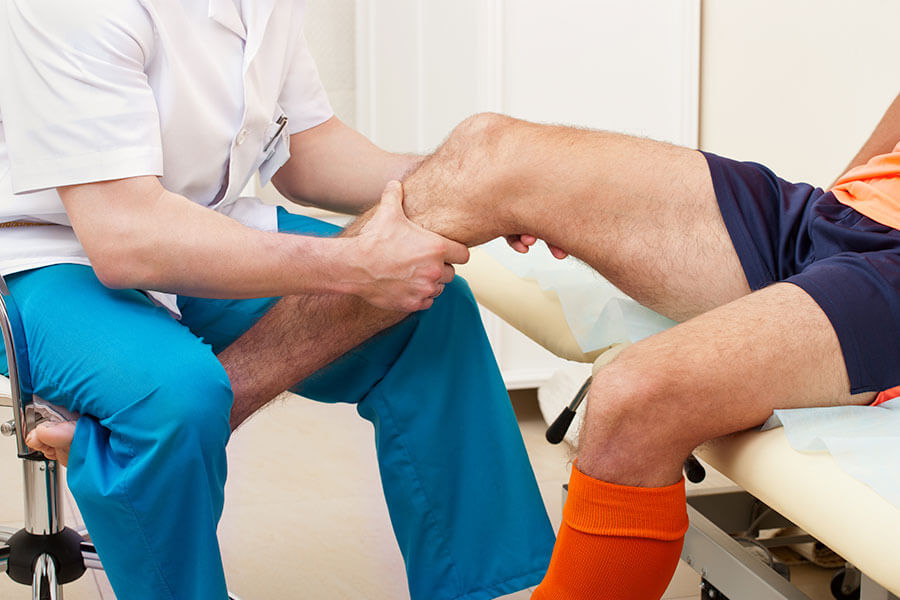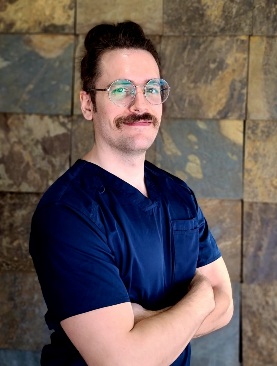
Our team of healthcare rehab professionals are experienced in the treatment of many conditions. From pre to post surgery rehabilitation from athletic injuries to chronic back conditions, practitioners at West Edmonton Physiotherapy are trained to diagnose and treat your sprains and strains. Some conditions we treat are, cervical and back strains and sprains, headaches, shoulder pain, frozen shoulder, shoulder instability, knee pain, chronic knee pain, post surgery knee rehab, ankle and foot pain, TMJ pain, wrist and elbow pain, to name a few conditions that we treat.
Neck Pain
Your neck is made up of seven vertebrae that extend from the skull to the upper back. Cervical discs absorb shock between the bones. The bones, ligaments, and muscles of your neck support your head and allow for motion against gravity. Any abnormalities, inflammation, or injury can cause neck pain or stiffness.
Many people experience neck pain or stiffness occasionally. In many cases, it’s due to poor posture or overuse. Sometimes, neck pain is caused by injury from a fall, contact sports, or whiplash.
Most of the time, neck pain isn’t a serious condition and can be relieved within a few days. In some cases, neck pain can indicate serious injury or illness and require a doctor’s care. If you have neck pain that continues for more than a week, is severe, or is accompanied by other symptoms, seek medical attention immediately.
Treatment
Conservative care utilizing our unique physical therapy approach is often the first choice of treatment. We specialize in the treatment of Neck Pain and work closely with many top doctors in Edmonton, Alberta, who lead the industry in these disorders. Our office has over 20 years of experience successfully treating neck pain and has helped countless patients decrease their pain and maintain their results. We combine our unique, pain relieving, manual therapy techniques with the latest research-proven exercise science.
Cervicogenic Headaches
Headaches
Headaches are a common painful disorder. Experts now report that 90% of Canadians will experience or have experienced a tension headache (HA). Some headaches can be treated with specialized physical therapy. We specialize in the treatment of cervicogenic headaches.
Definition: Cervicogenic headache is pain or discomfort located in the head, scalp, or neck regions and caused by abnormalities involving the spinal cord, nerves, joints, muscles or ligaments of the neck.
Our Treatment for Cervicogenic Headache Details:
Refer to Chiropractic and Exercise to reduce neck and head pain:
- "Evidence-based” approach focuses on gentle joint mobilization of the upper three cervical facet joints and a low-load cervical spine endurance program to train muscle control of the cervicoscapular region.
- A randomized clinical trial demonstrated that this approach can reduce the symptoms of cervicogenic headache by 50% or > as well as maintain the results one year later.
- Many patients will begin to feel relief from their head and neck pain in as few as four to six visits.
- Every patient is given a six-week training log and HA dairy to improve compliance and track progress.
Shoulder Pain
Shoulder pain encompasses a diverse array of problems and is estimated to affect up to 16 to 34 percent of the general population, depending on age and risk factors. What most people call the shoulder is really several joints that combine with tendons and muscles to allow a wide range of motion in the arm — from scratching your back to throwing the perfect pitch.
Mobility has its price, however. It may lead to increasing problems with instability or impingement of the soft tissue or bony structures in your shoulder, resulting in pain. You may feel pain only when you move your shoulder, or all of the time. The pain may be temporary or it may continue and require medical diagnosis and treatment.
Rotator Cuff Pain
Rotator cuff problems are the most common source of shoulder pain, accounting for more than two-thirds of cases. Rotator cuff disorders are associated with musculoskeletal problems that affect the joints and muscles of the shoulder, cuff degeneration due to aging and ischemia, and overloading of the shoulder.
Instability
Shoulder instability means that the shoulder joint is too loose and is able to slide around too much in the socket. In some cases, the unstable shoulder actually slips out of the socket. If the shoulder slips completely out of the socket, it has become dislocated. If not treated, instability can lead to arthritis of the shoulder joint.
Shoulder Arthritis
In 2011, more than 50 million people in the United States reported that they had been diagnosed with some form of arthritis, according to the National Health Interview Survey. Simply defined, arthritis is inflammation of one or more of your joints. In a diseased shoulder, inflammation causes pain and stiffness.
Although there is no cure for arthritis of the shoulder, Physical Therapy is a common treatment option. Using our specialized form of physiotherapy, most people with shoulder arthritis are able to manage pain and stay active.
Frozen Shoulder
Frozen shoulder (adhesive capsulitis) accounts for 2 percent of cases of shoulder pain. Risk factors for frozen shoulder include female gender, older age, shoulder trauma and surgery, diabetes mellitus, and cardiovascular, cerebrovascular, and thyroid disease.
Physical Therapy
West Edmonton Physiotherapy's specialized manual therapy has been clinically proven to improve shoulder range of motion and decrease pain. Moreover, many randomized control trial research articles have proven that when you combine well delivered manual therapy with therapeutic exercise you require less visits to meet your goals compared to therapeutic exercise alone.
Knee Pain
Knee Pain is a common complaint that affects people of all ages. Knee pain may be the result of an injury, such as a ruptured ligament or torn cartilage. Medical conditions such as arthritis, and infections can also cause knee pain.
Knee pain is a complaint in up to 20% of the general adult population, accounting for almost 3 million outpatient and emergency department visits per year. Sports-related activity accounts for approximately 60% of knee injuries producing ligamentous laxity.
Triggers for knee pain
An important trigger for knee pain can be a meniscal tear. A meniscal tear can either be caused by an injury during sports or is the consequence of chronic wear and tear. Additional triggers for knee pain can be knee arthrosis or a cruciate ligament rupture. Wear and tear as well as overloading and stress can also be frequent causes for knee pain.
What are the symptoms of chronic knee pain?
The symptoms of chronic knee pain are different for each person, and the cause for the knee pain often affects how the pain feels. Chronic knee pain may present as a:
- constant ache
- sharp, shooting pain when in use
- dull burning discomfort
- You may also experience chronic swelling and pain when the knee is touched.
Treatment
Although some knee injuries requires surgical intervention, many types of knee pain respond well to specialized physical therapy along with appropriate therapeutic exercise. West Edmonton Manual Therapy, practiced at our clinic has been clinically proven to reduce your pain and improve function. Moreover, many randomized control trial research articles have proven that when you combine well delivered manual therapy with therapeutic exercise you require less visits to meet your goals compared to therapeutic exercise alone.
Ankle/Foot Disorders
West Edmonton Physiotherapy focuses on effective assessment and treatment of the ankle-foot complex. Our manual therapy is clinically proven to be a safe and effective way to restore ROM and alleviate pain. Multiple randomized clinical trial research studies have shown that Australian manual therapy plus exercise improves function, decreases pain, and necessitates less physical therapy visits than exercise alone for ankle-foot disorders. We also offer our patients “mobilizations with movement” (MWMs). MWMs have been clinically proven to restore ankle motion and improve functional outcome measures for ankle-foot disorders.
We treat a variety of foot disorders including but not limited to:
- Acute and chronic ankle sprains
- Distal tib/fib disorders (high ankle sprain)
- Post-op ankle/foot rehab
- Plantar fasciitis
- Bunionectomy pain
- Post-op Morton’s neuroma pain
- Achilles tendonitis
- Running injuries
- Sports injuries
- Adverse neural tension of ankle/foot
Management
Conservative approach is first treatment of choice. Acute ankle injury can be managed conservatively using various by RICE protocols of immobilization and specialized physical therapy.
RICE protocol
The acronym stands for the four main procedural methods of treatment of the ankle: Rest, Ice, Compression and Elevation, which can be performed in the first 2-3 days.
- Patients are provided with crutches to help them walk until they can walk normally. Weight-bearing is limited to light weight-bearing. As part of cryotherapy, ice immersion is recommended for up to 20 minutes every 2-3 hours.
- To apply compression, the patient is provided with a flexible bandage to reduce swelling.
- To facilitate a reduction in swelling and for better venous and lymphatic drainage, the injured ankle should be elevated at a level higher than the heart.
Mild ankle sprains can be managed by using cryotherapy or ice therapy. In the inflammatory stage of the acute ankle injuries, non-steroidal anti-inflammatory medications can be used instead.
Hand Therapy
A hand, wrist, or shoulder injury can quickly compromise your quality of life whether it’s accident induced, a symptom of overuse, or has been brought on by a disease. West Edmonton Physiotherapy’ Certified Hand Therapist can get to the root of the problem, making adjustments to relieve pain that are well beyond what medicine could do alone.
Hand Therapy works to relieve pain in the hands, wrist, or shoulder due to:
- Traumatic injuries
- Fractures & dislocations
- Sports injuries
- Tennis elbow/lateral epicondylitis
- RTC tendonitis
- Arthritis
- Carpal & cubital tunnel, thoracic outlet syndrome, & other nerve entrapment disorders
- Amputations
- Burns
- Wounds
- Tendon & nerve injuries
- Dupuytren’s contracture
- Complex regional pain syndrome/RSD
- Shoulder, elbow, wrist & hand pain
- Postoperative care of shoulder arthroscopy
Temporomandibular Pain
Temporomandibular Disorder (TMD) is made up of symptoms that involve the jaw and surrounding facial muscles, teeth, ears, and neck.
Common symptoms include:
- TMJ pain (pain in the joint)
- Face or jaw pain
- Ear pain
- Ringing in the ears
- Dizziness
- Headache
- Joint sounds (popping, clicking, or grinding)
- Muscle pain and/or tenderness
- Limited mouth opening or closing, or sideward movements
- Neck Pain
Common causes of TMD:
- Myofascial pain – The most common form of TMD; discomfort or pain in the muscles that control jaw function and the next and shoulder muscles.
- Internal derangement of the joint – a dislocated jaw or displaced disc, or injury to the condyle.
- Degenerative joint disease – such as osteoporosis or rheumatoid arthritis in the jaw joint.
Note: a person may have one or more of these conditions at the same time.
Treatment will usually consist of a combination of exercise, manipulation, mobilization, stretching, heat, and electric stimulation.






